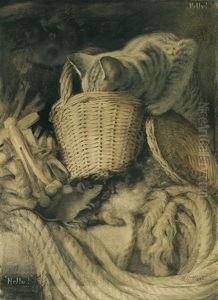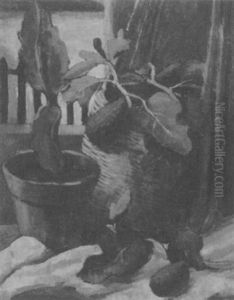Henry Grant Plumb Paintings
Henry Grant Plumb was an American painter born in Sherburne, New York on July 27, 1847. Although not as widely recognized as some of his contemporaries, Plumb made significant contributions to the art world during his time, particularly known for his landscape and portrait paintings. He demonstrated an early interest in art and, seeking to develop his skills, he went on to study at the National Academy of Design in New York City, an institution that played a crucial role in the education of many American artists in the 19th century.
After his initial education, Plumb continued to refine his technique and was influenced by the prevailing art movements of his time, including the Hudson River School, which was known for its romantic portrayal of the American landscape. Plumb's work often reflected a deep appreciation for nature, a characteristic of the Hudson River School's aesthetic. He traveled extensively, which allowed him to capture a wide range of landscapes and scenes in his works.
Plumb's career spanned many decades, and throughout this period, he exhibited his work at various venues, including the National Academy of Design and the Boston Art Club, among others. His paintings were well-received, earning him a reputation as a skilled landscape and portrait painter. Despite this, Plumb did not gain the same level of fame as some of his peers, and as a result, his work has often been overlooked in the broader narrative of American art history.
Henry Grant Plumb passed away on December 27, 1930, in Utica, New York. Today, his paintings can be found in private collections and occasionally appear in auctions. While he may not be a household name, Plumb's dedication to his craft and his ability to capture the beauty of the American landscape make him a noteworthy figure in the story of American art.





